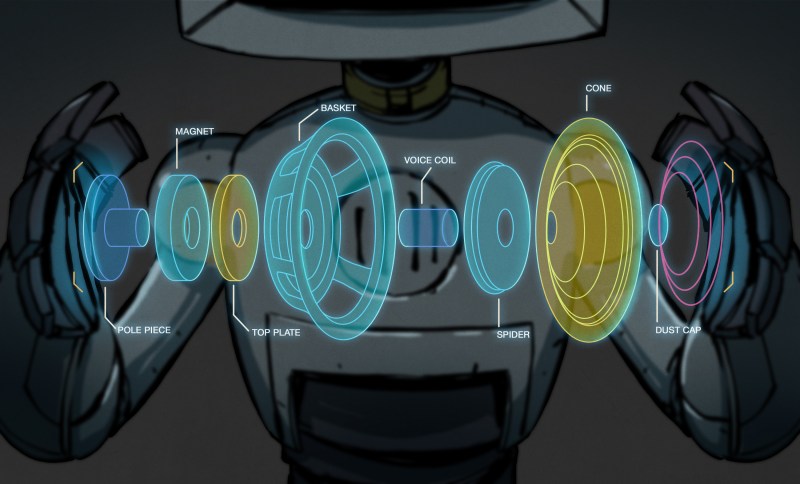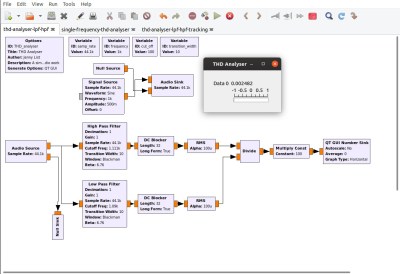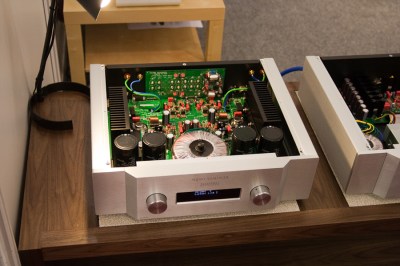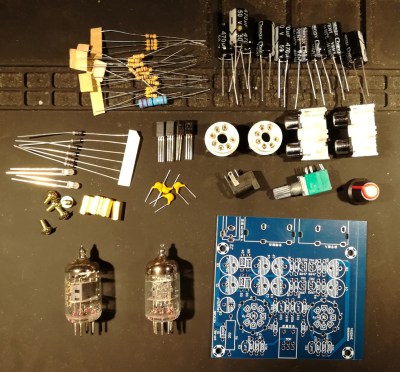Know Audio: Amplifiers And Distortion

As we’ve traced our no-nonsense path through the world of Hi-Fi audio, we’ve started with the listener, understood the limitations of the human ear, and thence proceeded to the loudspeaker. We’ve learned a bit about speaker cabinets and their design, so it’s time to venture further down the chain to the amplifier that drives those speakers.
The sharp-eyed will be ready to point out that along this path also lies the speaker cables, but since we’ll be looking at interconnects at a later date we’ll be making the dubious and simplistic assumption for now that the wires between speaker and amplifier are ideal conductors that don’t have a bearing on listening quality. We’ll be looking at amplifiers in enough detail to warrant more than one piece on the subject, so today we’ll start by considering in a slightly abstract way what an amplifier does and where it can fall short in its task. We’ll be introducing probably the most important thing to consider in any audio system, namely distortion.
The job of an audio amplifier is to take an audio signal at its input and present the same signal on its output at a greater amplitude. In the case of a preamplifier it will usually be designed to work with high impedances in the order of 50 kΩ at both input and output, while in a power amplifier designed to drive speakers or headphones it will drive a much lower impedance. Commonly this will be 4 Ω or 8 Ω for loudspeakers, and 32 Ω for headphones.
All Amplifiers Are (Slightly) Broken
In the ideal amplifier, what appears at the output should be a completely faithful replica of what is presented at the input. In reality, this perfectly linear device does not exist, because of the flaws of electronic components. Though we can make amplifiers that are astoundingly good, there will always be a slight difference between the output and input signals beyond merely their amplitude.

If we were to imagine for a moment an extremely non-linear amplifier which when fed with a pure sine wave returned a square wave on its output, most of us are probably aware that the square wave would be the sum of that original sine wave and a series of its multiples, or harmonics. Any audio amplifier we are likely to encounter will be far closer to a perfect linear amplifier than that, but even the smallest non-linearity will result in detectable harmonic levels on the output.
It’s these harmonics generated within the amplifier that are referred to as harmonic distortion, and they are measured by feeding a pure sine wave into the device and measuring the ration of fundamental frequencies to harmonics on the output (Our 2020 April Fool may have been poking fun at high-end cables, but included a method for doing this with GNU Radio.) This is expressed as Total Harmonic Distortion, usually as a percentage of the output which is composed of harmonics. A good quality Hi-Fi amplifier will typically have a %THD in the order of a fraction of a percent. THD is measured at a single frequency at any one time and the quoted figure is usually at 1 kHz, but it’s worth considering the effects across multiple frequencies. It’s usual for an amplifier to have a slightly worse THD at higher frequencies, for example.

When we think of distortion it’s harmonic distortion that comes to mind, but THD is not the only type of amplifier shortcoming that can make a difference to the output. For example, if you deconstruct the task an audio power amplifier performs, from one perspective it amplifies the input to drive the speakers, but from another it forms the bridge between its power supply and via the speaker cables, those speakers.
Put simply, its task is to turn high power DC from the power supply into high power AC for the speakers. Thus the amplifier is only one part of the circuit, and speakers, amplifier, and power supply must be matched in their capabilities and up to the task in hand.
Should you open up a high-end linear Hi-Fi amplifier you’ll find that its case is mostly filled up with power supply components; a very large mains transformer and a block of smoothing capacitors. This is because the power supply is designed to be able to service much higher instantaneous loads than its normal constant load, to adequately handle peaks in the audio stream such as drum beats. The point of exploring this avenue is to understand that the distortion of an amplifier depends not only on the amplifier itself but also the quality of the components that surround it, in that a seemingly distortion-free amplifier can still be exhibit distortion at times if it is paired with an inadequate power supply.
Another example of distortion from an unexpected source could be found in the stereo tube amp that was my youthful folly. It suffered from an appalling phase response that gave a spectacularly wooly sound, yet it still had a pretty decent frequency response and THD that would otherwise have labelled it as a good amplifier. Fortunately it’s not likely that you’ll be troubled by that in any reasonable amplifier, but we hope to have shown that there are many potential sources for distortion in amplifier design beyond a simple THD measurement of the amplifier block itself.

There’s one more moment in which you’ll hear distortion mentioned in discussion of Hi-Fi that’s worth exploring here, and it’s unexpectedly in a positive light even if it’s in a very subjective context.
It’s a long-running thing in audiophile circles as to whether a tube amplifier is better than a transistor one, and one of the arguments mobilised in the defence of the tube amplifier is that behind the much-vaunted “tube sound” is that tubes produce more even harmonic distortion while transistors produce more in the odd harmonics.
It’s one of those things that almost certainly has more to do with legend than reality, and probably originates in the days when transistor Hi-Fi was in its infancy and tube amplifiers were a mature technology. Many transistor amplifiers from the 1960s had noticeable flaws, and it’s possible that some of their legacy has rubbed off through the decades. It’s safe to say though that the art of making a very good transistor amplifier was cracked a very long time ago, and aside from the bragging rights there should be little reason to favour one over the other of equivalent quality in 2021.
Trust Only Your Instruments
In the previous paragraph we’re coming close to the original motivation for this series and the conclusion of our distortion overview. Saying that a good tube amp is no better than a good transistor amp will doubtless have some audiophiles exclaiming in disbelief that I clearly have no idea what I’m talking about and the difference is obvious in listening, to which I would like to remind them of the first article in this series about the human ear. Given the choice between a subjective assessment from a human ear and a reproducible measurement from a calibrated instrument, the only trustworthy information comes from the instrument. A hallmark of audiophile writing is often preposterous claims about audio components, so this series is presenting an introduction to audio based upon real engineering. Thus any discussion of distortion should end with this: only take notice of verifiable readings from trustworthy instruments.
We’ll be returning to the subject of distortion in a later instalment when we look in more detail at its measurement. Meanwhile we will return in the next article of the series to look in more detail at the amplifiers themselves. We’ll cover their different types, and their relative merits and disadvantages.
Post a Comment